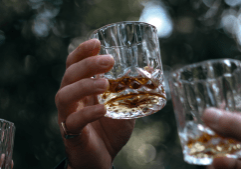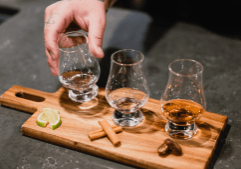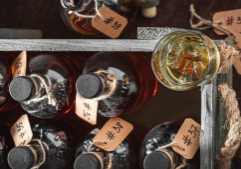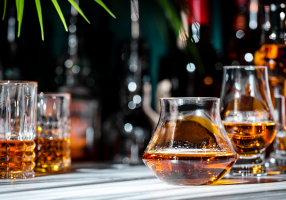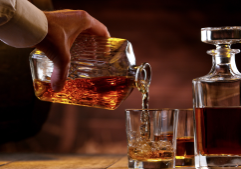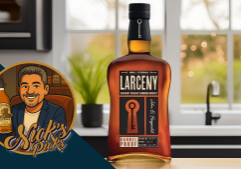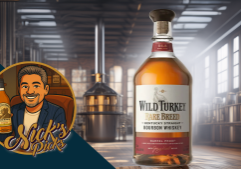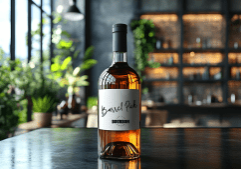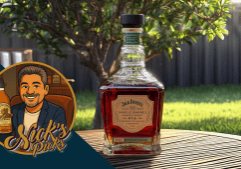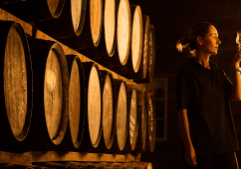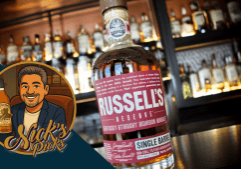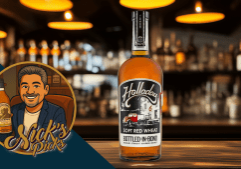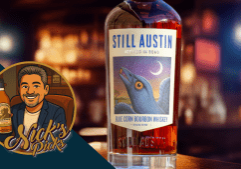Let’s talk about a word that haunts bourbon lovers like a ghost at a bottle shop: allocated.
You’ve heard it whispered by liquor store clerks. You’ve seen it written in Sharpie on a dusty shelf sign. And if you’ve ever walked into a shop hoping to score a bottle of Weller 12 or Pappy and were met with an eye roll and a “Sorry, we didn’t get any this year,” then yeah—you’ve already danced with the devil they call allocated bourbon.
So what does “allocated” really mean in the bourbon world? Why are these bottles so hard to find—and is the juice really worth the chase?
Let’s break it down.
What Does “Allocated Bourbon” Actually Mean?
Put simply: Allocated bourbons are limited-release bottles that are distributed in small quantities to retailers.
Unlike mass-produced shelf staples like Buffalo Trace or Maker’s Mark, allocated bottles are assigned by the distributor to liquor stores, bars, and restaurants—usually based on things like sales history, volume, or long-standing relationships.
That’s right—you can’t just order an allocated bottle. You have to be chosen.
Why Are Allocated Bourbons So Limited?
There are a few big reasons:
1. Aging Takes Time (and Space) – Bourbons like Eagle Rare, George T. Stagg, or Pappy Van Winkle are often aged 10+ years. That means distilleries need to plan a decade in advance—and they can only age so many barrels at once. You can’t speed up time (no matter how much we beg).
2. Skyrocketing Demand – Bourbon’s popularity has exploded in the last decade. Domestic fans, collectors, flippers, and even international markets are all chasing the same limited bottles. There’s just not enough supply to meet demand—especially for brands with cult-like followings.
3. Intentional Scarcity – Let’s be honest: some brands want the hype. Scarcity creates demand. Demand creates frenzy. And that frenzy drives prices through the roof—secondary market, we see you 👀.
How Do Stores Get Allocated Bottles?
It’s all about relationships and sales volume. Distributors reward stores that:
- Move a lot of regular product (cases of Tito’s, Bud Light, etc.)
- Stay loyal to a distributor’s full portfolio
- Have been longtime accounts with steady purchase history
This means big chain stores and high-volume liquor shops usually get the first (and best) crack at the most coveted bottles. Mom-and-pop stores? They might get a bottle or two—once a year. Maybe.
Why You Never See Them on the Shelf
Allocated bottles rarely hit the shelf because:
- They’re sold out through call lists or VIP customers
- They’re held for store raffles or charity events
- Some are quietly sold to preferred buyers (yes, it happens)
- And a few… never make it past the staff
So when you stroll in hoping to “just check if you have any Blanton’s,” you’re likely already too late.
What About Secondary Pricing?
You’ve probably seen Pappy listed online for $2,000+ or Elmer T. Lee going for $300 when the MSRP is under $50. That’s the secondary market—unregulated resales by private collectors and flippers.
Is it legal? Technically, no.
Is it common? Absolutely.
Is it risky? You bet.
Will people pay it anyway? Every. Single. Day.
Are Allocated Bourbons Worth It?
Sometimes. Don’t get me wrong—there are truly phenomenal pours in the allocated category. But not all of them live up to the hype or the price tag. Some younger, more available bourbons outshine the unicorns in blind tastings.
At the end of the day, taste is personal—and hype doesn’t always equal quality.
The Final Sip:
“Chase the flavor, not the flex. The best bottle is the one you enjoy, not the one you hoard.”
Can’t Find It? Win It Instead.
That’s exactly why we created Bourbon for the Cause—to put rare and allocated bottles in the hands of real bourbon lovers, not flippers and insiders. Every experience helps fund an incredible cause, and every entry is a shot at landing the bottle of your dreams.
